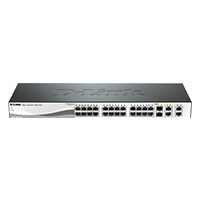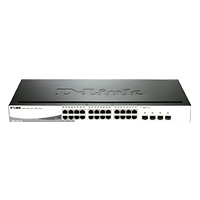Network Switches
Network Switches
A network switch (also called switching hub, bridging hub, officially MAC bridge) is a computer networking device that connects devices together on a computer network by using packet switching to receive, process, and forward data to the destination device. A network switch also connects computers to each other, like a hub. Where the switch differs from a hub is in the way it handles packets of data. When a switch receives a packet of data, it determines what computer or device the packet is intended for and sends it to that computer only. It does not broadcast the packet to all computers as a hub does which means bandwidth is not shared and makes the network much more efficient.
Switches have become extremely sophisticated in recent years. For example, models have been developed that include support for optical fiber networks, the addition of services at higher layers of the OSI model and the ability to create virtual LANs (VLANs). A VLAN is a LAN in which devices are logically configured to communicate as if they were attached to the same network, without regard to their physical locations.
Switches can also include the functionality of routers, which are devices and/or software that connect at least two networks and forward packets among them according to the information in the packet headers and routing tables. However, in general, switches are simpler and faster than routers, which require knowledge about the network and how to determine the route. Routing occurs at the network layer (i.e., the third layer) of the OSI model, in contrast to the data link layer managing operation of switches.
Switches are more advanced than hubs and less capable than routers. Unlike hubs, switches can limit the traffic to and from each port so that each device connected to the switch has a sufficient amount of bandwidth. For this reason, you can think of a switch as a “smart hub.” However, switches don’t provide the firewall and logging capabilities that routers do. Routers can often be configured by software (typically via a Web interface), while switches only work the way the hardware was designed.
Showing all 3 results



